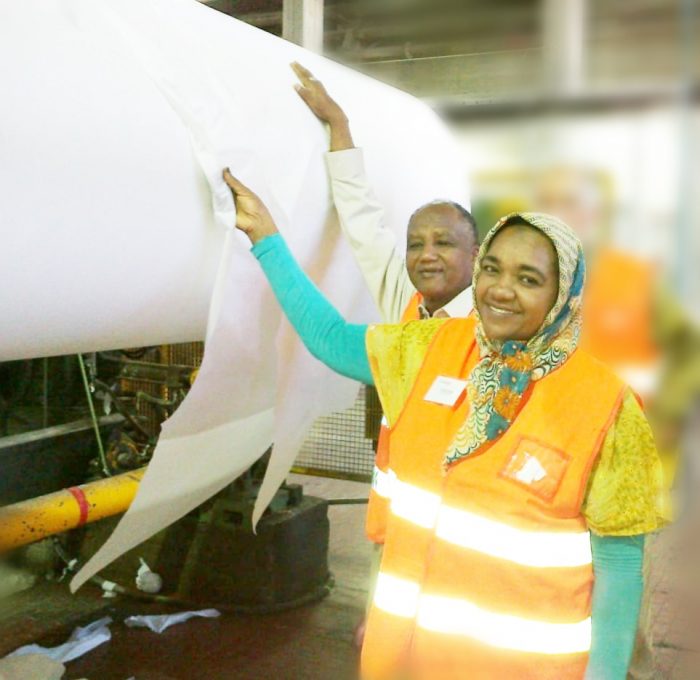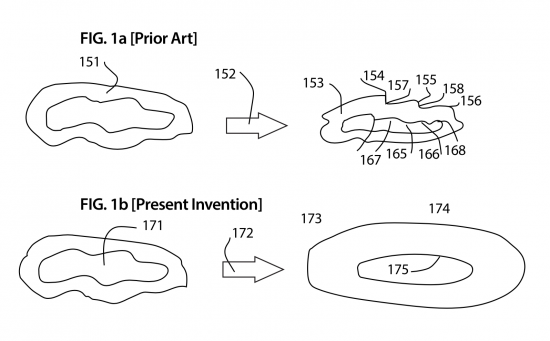
A greener tech: BC researchers license new repulping method for recycled paper
October 6, 2020
By
Kristina Urquhart

A husband-and-wife research team in Vancouver, B.C. have developed a patented new process that uses lignin to help turn recycled paper back into pulp, and that promises to cut costs, reduce energy use and be more environmentally friendly than traditional methods.
After studying the chemical behaviour of cellulose and water molecules for nearly two decades, Dr. Salah Awadel-Karim and Dr. Nagla Dawelbait, co founders of SANATA Technologies Inc., were looking into a way to improve the fibre quality of recycled paper while producing less wastewater slurry.
“Most recycled paper industry companies are looking for a new technology to solve their problems,” says Dr. Awadel-Karim, also CEO of SANATA. “In this case, what [were] the essential requirements of non-toxic efficient repulping methods needed to improve conventional technologies?”
There are more than 1,300 paper mills around the world that accept recycled furnish to turn it into another material, such as pulp that can be used again in the paper production process.
Challenges with current technology
The challenges with conventional recycled paper technology include the quality of the furnish (i.e. stickies and other contaminants), the amount of wastewater produced in the process, the cost (i.e. chemicals, disposal of heavy sludge, high production costs) and environmental concerns including greenhouse gas emissions.
Current paper recycling technologies – whether neutral or alkaline – can result in poor fibre quality, fine generation, fibre losses, high chemical use, and lower quality of the end product, says Dr. Awadel-Karim.
The stiff fibres often found in recycled paper products – and, later, repulped materials – occur when the material gets wet, dries and then hardens. These stiff fibres are prone to breaking, meaning the repulped material is not as strong as it was when it was virgin fibre.
“Each of these problems has been addressed partially, not as root causes,” says Dr. Awadel-Karim. “There is still a need to improve use of water, energy, chemicals and other raw materials and to minimize solid waste, thermal pollution and emissions to air and water to eliminate toxic mill discharges and waste.”
The main cause of the problems is lignocellulosic hornification, he says. Hornification is the aforementioned stiffening of fibres, which is caused by the hydrogen bonding that occurs to pulp or other lignocellulosic materials when they dry.
SANATA Technologies’ new repulping method removes this lignocellulosic hornification and produces stronger fibres that are almost good-as-new.

Figure 1a: A fibre cross-section showing the treatment of hornification using conventional technology. Figure 1b uses SANATA’s technology. Photo: SANATA Technologies
A gentler process
Drs. Awadel-Karim, Dawelbait and the four other engineers and researchers who make up SANATA Technologies work together on refining the process. Dr. Awadel-Karim invented the made-in-Canada process, which received a patent this past June. Among other things, the patent covers the use of lignin to create a repulping solution, plus the repulping method itself.
In general terms, the invention introduces a lignin product into recycling processes to “slough off” the rigid shell that forms on pulp fibres after drying.
The detailed explanation is this: The method involves “using a lignocellulosic hornification remover (LHR) in an agitator vat or pulper, with optimization of the process variables depending on the reactivity of LHR quality, type of material being repulped and the desired characteristics of the pulp resulting from the project,” says Dr. Awadel-Karim.
Hornification is the aforementioned stiffening of fibres, which is caused by the hydrogen bonding that occurs to pulp or other lignocellulosic materials when they dry.
The LHR is a solution blended with water molecule clusters and customized for every application that replaces nearly all of the chemicals used in conventional neutral or alkaline repulping methods. Together, the LHR and the optimization of variables can achieve complete dehornification of the cellulose.
From Dr. Awadel-Karim: “The hydroxyl groups (OH) of the cellulose molecules have greater affinity and act with no repulsion toward the attenuated H bonds of water molecules present in a LHR micro-cluster molecule.
In other words, LHR offers a reactive medium with smaller molecule clusters and less sludge. It also secures a special type of swelling (intramicellar swelling) that renders the fibres more responsive, while conventional technology offers normal directional swelling.”
The LHR works both inside and outside the fibre to “break down the intra- and intermolecular H-bonds of both amphorous and crystalline cellulose (i.e. cellulose micelle crystallites).”
This creates cellulose with open H-bonds, which allows for the complete removal of stickies, adhesives and ink particle additives without compromising the integrity of the fibre.
A stronger result
At peak conditions, the repulping technology produces zero per cent fibre rejects, and has the capability to further extend the life of paper because it allows pulp to re-enter the value stream with characteristics similar to virgin fibre.
And by separating the non-fibrous rejects so completely from the usable fibres, there isn’t as much sludge that ends up in the wastewater. Less sludge means there is not as much to take to landfill, and it also ultimately leads to lower COD and BOD readings in the wastewater.
“It is also ideal in an economic sense and reduction of chemical toxicity and gas emissions,” says Dr. Awadel-Karim. “It is noteworthy to mention that the technology is flexible enough to accommodate any necessary industrial agent input if needed.”
The company has so far conducted industrial trials at recycled paper mills.
“An interesting technical observation [is] that the frequent production problems encountered in the fabrication of lightweight paper have not been recorded at all through the application of the technology.”
In order to implement its technology into a recycled paper mill’s process, SANATA must research to ensure that the process will work with the mill’s materials before conducting a three-day mill trial for verification of the technology at commercial scale, followed by a longer mill trial to document the technology benefits.
SANATA conducted a trial on a mill production line in 2013 to compare conventional technologies with the new repulping method.
Drs. Awadel-Karim and Dawelbait determined that the physical and mechanical properties of paper products ultimately improved when using material that had been repulped with their method, and that the amount of virgin pulp required to make a paper product decreased up to 60 per cent with the addition of their repulped material.
In total, about 3,000 tons of finished paper has been produced in this trial to verify the results, and production levels increased by at least four per cent.
Production costs decreased due to less chemical consumption – use of other chemicals reduced by anywhere from 17-28 per cent.
There was reduced energy consumption of 20 per cent in the stock preparation area, and energy savings in the fabrication area, including paper machine, was seven per cent. The repulping method also led to 28 per cent fewer fibre rejects.
“After the mill trial, we were able to prototype our customized solution to different furnishes and set up the optimization procedure for different finished product types,” says Dr. Awadel-Karim.
“An interesting technical observation [is] that the frequent production problems encountered in the fabrication of lightweight paper have not been recorded at all through the application of the technology.”
SANATA Technologies is targeting its process to the 400 global companies that specialize in recycled paper products.
In order to deploy the technology, no special equipment is needed. The customized solution gets added to the pulper, and operators adjust consumption based on the recommended variables determined by SANATA.
The company is actively licensing its technology to North American pulp and paper mills that specialize in recycling. For more information, visit www.sanata.ca.
This article appears in the Fall 2020 edition of Pulp & Paper Canada.


